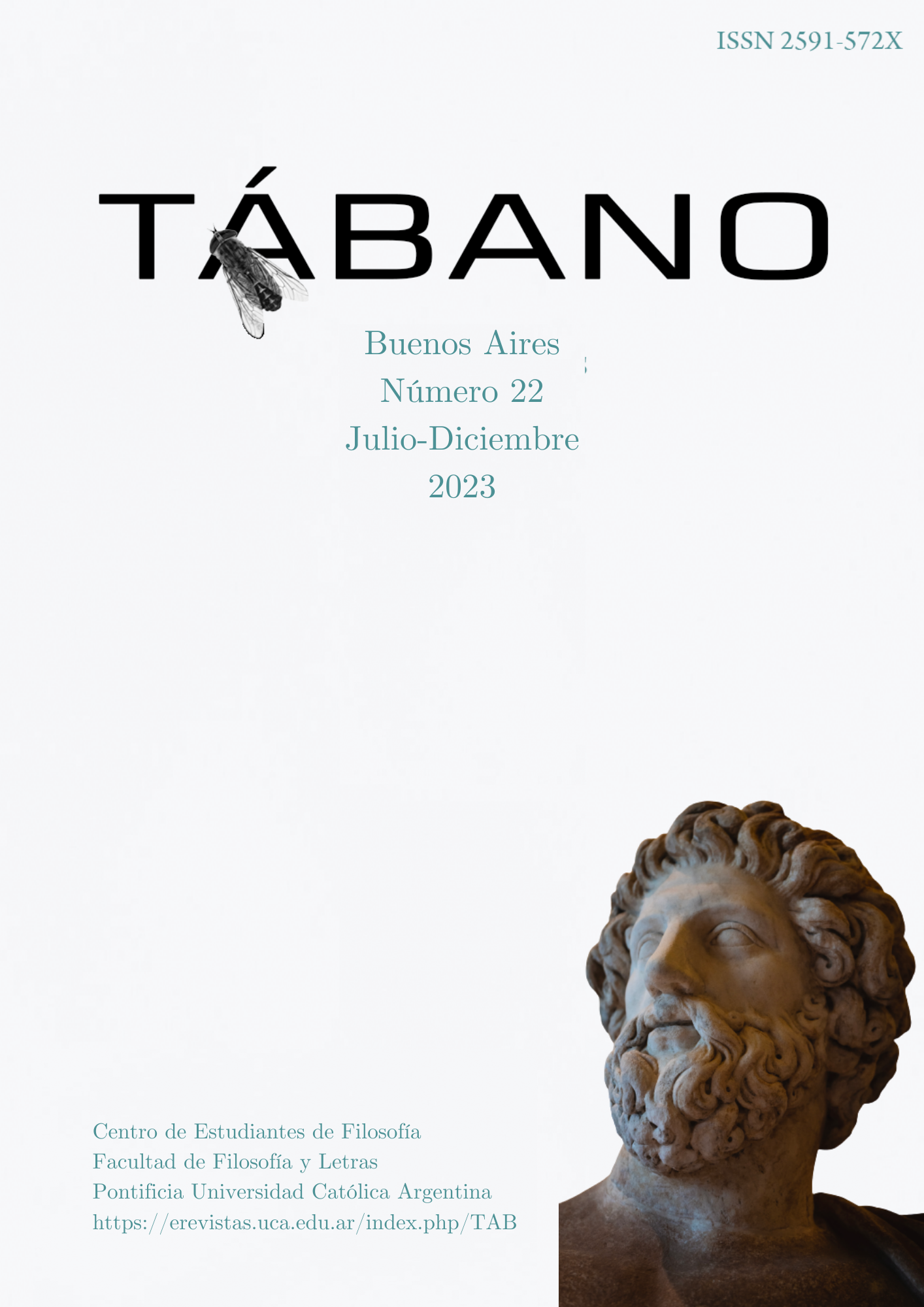To scribble beyond the paper: a phenomenological analysis of movement in the early childhood
DOI:
https://doi.org/10.46553/tab.22.2023.p40-62Keywords:
Children’s scribble, Phenomenology, Movements, Objects, Merleau-Ponty.Abstract
What do children do when they scribble? This question, which seems to appeal only to developmental psychologists or early childhood educators, indirectly confronts us with many problems typical of the philosophy of the body. What is the relationship between corporeality and cognition? Does all thought imply movement? Are the objects we manipulate decisive when it comes to understanding our ways of knowing the world? The objective of this work is to analyse scribbling (as a complex activity that has been the exclusive object of study in Psychology for years) from a phenomenological approach, considering it as an experience in which not only the child expresses his contact with the world, but also collaborates with the exploration of their motor possibilities. To do this, first, the description that Piaget and Luquet make of children's drawing will be presented, to then contrast it with research that considers the scribble as a significant experience, with intersubjective roots and with an expressive and communicational meaning. Secondly, Maurice Merleau-Ponty's proposal on children's drawing will be described as a framework for analysis that allows a holistic approach to this experience, making materials and the body a constitutive part of its realization. In this work, then, a phenomenological analysis of movement will be carried out, taking (as in the phenomenological tradition) elements from empirical disciplines. I believe that a phenomenological approach to scribbling shows us (unlike other approaches) that this experience is not only settled on the surface on which it is performed, but also involves others, the objects that intervene in its realization and the body of the child. Likewise, the analysis of scribbling, as a specifically infantile experience and typical of the first years of life, can shed light on the relationship between perception and movement, showing in a specific experience how motor skills and objects are linked in early childhood, as correlates of children's motor exploration.
Downloads
References
Anning, A., and Ring, K. (2004). Making Sense of Children’s Drawings. Open University Press.
Arnheim, R. (1954). Art and Visual Perception: A Psychology of the Creative Eye. Faber & Faber.
Battán Horenstein, A. (2021). Del danzar como hábito al danzar como proyecto motor. Revista de Filosofía Open Insight, vol. XII, núm. 25, pp. 167-186.
Blocker, H. (1969). Physiognomic Perception. Philosophy and Phenomenological Research, Vol. 29, No. 3, 377-390.
Calmels, D: Lesbegueris, M. (2013). Juegos en el papel. Puerto creativo.
Español, S. (2012). Semiosis y desarrollo humano. En Castorina, A.; Carretero, M. Desarrollo cognitivo y educación I. Los inicios del conocimiento (pp. 219-242). Paidós.
Español, S. (2017). Si queremos saber cómo sopla el viento podemos mirar la arena. Pensar el desarrollo psicológico observando el movimiento. En Pérez, D. y Lawler, D. (Eds.), La segunda persona y las emociones (pp. 45-86). SADAF.
Español, S. et al. (2022). Moving and interacting in infancy and early childhood. An Embodied, Intersubjective and Multimodal Approach to the Interpersonal World. Springer.
Gallagher, S. (2017). Intercorporeidad y reversibilidad: Merleau-Ponty, emoción, percepción e interacción. En Pérez, D. y Lawler, D. La segunda persona y las emociones (pp. 23-44). SADAF.
Head, H. (1983). On disturbances of sensation with especial reference to the pain of visceral disease. Brain, 16 (1-2), 1-133.
Jolley, R. P. (2009). Children and Pictures: Drawing and Understanding. Backwell.
Kellogg, R. (1959). What Children Scribble and Why. N-P Publications.
Kellogg, R. (1969). Analyzing children’s art. National Press Books.
Kellogg, R. (1979). Children's Drawings, Children's Mind. Avon Books.
Kellogg, R. and O’Dell, S. (1967). The Psychology of Children's Art. Del Mar.
Longobardi C.; Quaglia R.; Iotti, N. (2015). Reconsidering the scribbling stage of drawing: a new perspective on toddlers’ representational processes. Frontiers in Psychology. 6:1227.
Lowenfeld, V. (1952). The Nature of Creative Activity. Harcourt.
Luquet, G. H. (1972). El dibujo infantil. A. Redondo.
Merleau-Ponty, M. (1971). La prosa del mundo. (trad. Francisco Pérez Gutiérrez). Taurus (original en francés, 1969).
Merleau-Ponty, M. (1976). La estructura del comportamiento. (trad. E. Alonso). Hachette (original en francés, 1942).
Merleau-Ponty, M. (1984). Fenomenología de la percepción. (trad. J. Cabanes). Planeta-Agostini (original en francés, 1945).
Merleau-Ponty, M. (2001). Psychologie et pédagogie de l’enfant. Cours de Sorbonne (1949-1952). Verdier.
Ospina Tascón, V. y Español, S. (2016). El movimiento y el sí mismo. En Español, S. (comp.), Psicología de la música y del desarrollo. Una exploración interdisciplinaria sobre la musicalidad humana. Paidós.
Piaget, J., Inhelder, B. (1978). Psicología del niño. (trad. L. Hernández Alfonso). Morata.
Piaget, J.; Inhelder, B. (1972). La représentation de l’espace chez l' enfant. Puf.
Pinto, G.; Accorti Gamannossi, B.; Cameron, C. (2011). From scribbles to meanings: social interaction in different cultures and the emergence of young children’s early drawing. Early Child Development and Care. Vol. 181, No. 4, 425–444.
Quaglia, R.; Longobardi, C.; Iotti, N.; Prino, L. (2015). A new theory on children’s drawings: Analyzing the role of emotion and movement in graphical development. Infant Behavior & Development. 39, 81–91.
Rochat, P. (2004). El mundo del bebé. Morata.
Sheet-Johnstone, M. (2009). The corporeal turn: an interdisciplinary reader. Imprint academic.
Stern, D. (1991). El mundo interpersonal del infante. Una perspectiva desde el psicoanálisis y la psicología evolutiva. (trad. Jorge Piatigorsky). Paidós (original en inglés, 1985).
Stern, D. (2010). Forms of vitality. Exploring dynamic experience in psychology, the arts, psychotherapy, and development. Oxford University Press.
Vinter, A., Puspitawati, I., and Witt, A. (2010). Children’s spatial analysis of hieralchical patterns: construction and perceptions. Dev. Psychol. 46, 162.
Wallon, H. (1978). Del acto al pensamiento. Psique.
Wallon, H; Lurçat, L. (1958). Le dessin du personnage par l'enfant, ses étapes et mutations. Enfance, 3.
Wallon, H; Lurçat, L. (1987). Dessin, espace et schéma corporel chez l’enfant. ESF
Downloads
Published
How to Cite
Issue
Section
License
Copyright (c) 2023 Jesica Estefanía Buffone

This work is licensed under a Creative Commons Attribution-NonCommercial-ShareAlike 4.0 International License.


